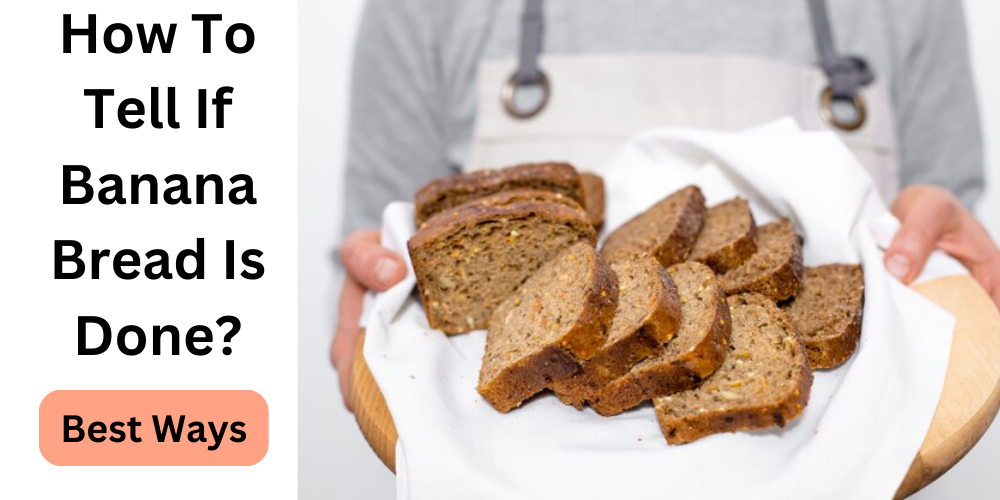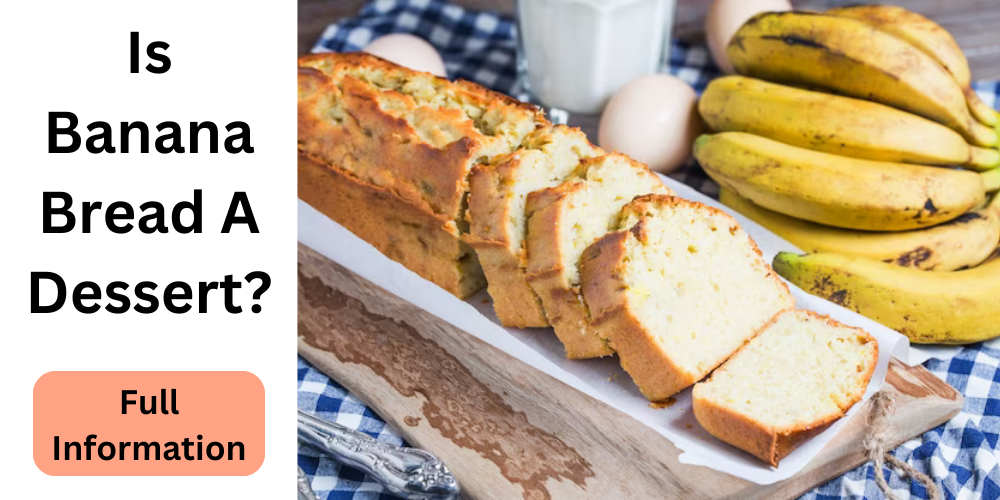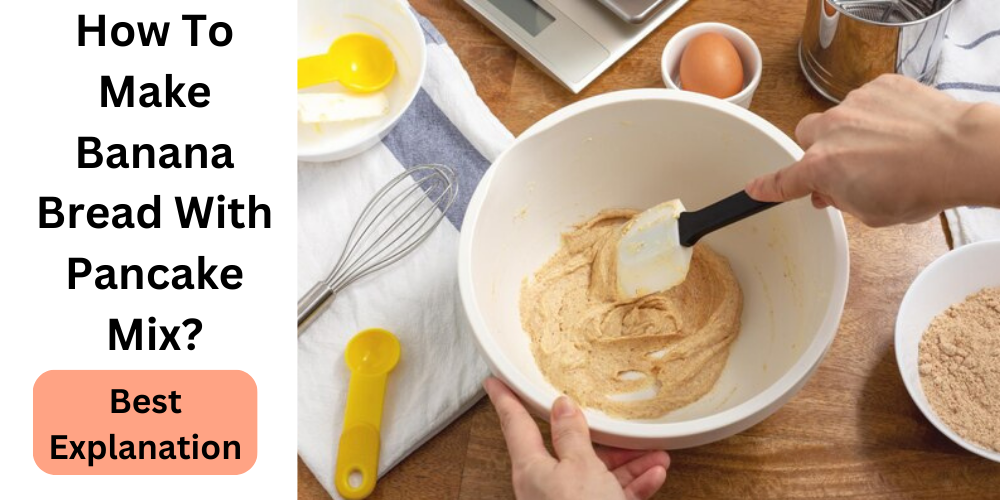When it comes to baking banana bread, accomplishing that ideal harmony between clammy and delicate yet completely cooked can be somewhat of a test. We’ve all been there – enthusiastically trusting that the awesome smell will float through our kitchens as the banana bread prepares, just to wonder, “How To Tell If Banana Bread Is Done?” In this comprehensive guide, we’ll explore the various methods and cues to help you determine when your banana bread is perfectly cooked.

How To Tell If Banana Bread Is Done?
How To Tell If Banana Bread Is Done? One of the easiest ways to gauge the doneness of your banana bread is by using your eyes. Visual cues can provide valuable insights into its progress. This is what to look for:
- Golden Brown Color: As banana bread bakes, it transforms from a pale batter to a beautiful golden brown. This color change indicates that the crust has formed and that the sugars within have caramelized. When the top and sides of your banana bread exhibit this rich hue, it’s a good sign that it’s close to being done.
- Cracks on the Surface: When you notice cracks appearing on the surface of your banana bread, it’s typically a sign that the interior is set and the structure is stable. While these cracks can be somewhat intimidating, they are a good indicator of doneness.
Touch and Texture
Another reliable method to determine if your banana bread is done is by assessing its texture through touch. Here’s how you can use this approach:
- Firmness: Gently press the top of the banana bread with your finger. If it springs back and feels firm, it’s likely ready. If it leaves an indentation, it may need more time. A fully cooked banana bread should feel springy to the touch.
- Clean Toothpick or Skewer Test: While we’ll explore alternatives to the toothpick test later, it’s a classic method. Insert a toothpick or skewer into the center of the banana bread. If it comes out clean with only a few moist crumbs attached, your bread is done. If it has raw batter on it, it needs more time in the oven.
Internal Temperature and Testing Different Variations
While most of us rely on the toothpick test, more experienced bakers often prefer to check the internal temperature. This move offers exact and predictable outcomes, particularly while managing varieties of banana bread, similar to sans gluten or veggie lover renditions.
- Use a Food Thermometer: Supplement a food thermometer into the focal point of your banana bread. It should read between 200-210°F (93-99°C). This temperature range ensures that your bread is fully cooked, with a moist crumb texture.
- Accounting for Variations: If you’re baking banana bread with unique ingredients or dietary restrictions, be aware that they might affect the final texture. Gluten-free bread, for instance, might be moister, so it’s crucial to focus on the internal temperature for doneness.
Aroma and Sound
The delightful scent of banana bread filling your kitchen is a promising sign, but there’s more to it than meets the nose.
- Aroma: A well-cooked banana bread emits a tantalizing aroma that becomes stronger as it nears completion. If the air in your kitchen is perfumed with the sweet scent of bananas and baked goods, your bread is likely done.
- Sound: Listen carefully as your banana bread bakes. At the beginning of the process, you might hear sizzling and slight crackling sounds. As it nears doneness, these sounds will diminish. If your banana bread is quiet, it’s a strong indicator that it’s ready.
Common Pitfalls and Troubleshooting
Before we dive into explicit inquiries regarding banana bread doneness, it’s critical to know about normal entanglements that can influence the result. A portion of these issues could persuade you to think your banana bread is half-cooked, regardless of whether it’s not:
Underbaking Mistake: Be patient and avoid removing your banana bread from the oven too soon. If you take it out prematurely, it may appear undercooked. Always follow the recommended baking time in your recipe.
- Overripe Bananas: While ripe bananas are ideal for banana bread, there’s a limit. If your bananas are overly ripe and mushy, the excess moisture can lead to a longer baking time and may affect the final texture.
- Uneven Heating: Uneven heating in your oven can cause portions of your banana bread to be undercooked while others are perfectly done. To mitigate this, rotate your bread during baking.
Now, let’s address some specific questions you may have about ensuring your banana bread is done to perfection.
Related Guides:
How Do you Know If Banana Bread is Cooked All the Way?
To ensure banana bread is fully cooked, follow these steps: Insert a toothpick or skewer into the center; if it comes out clean with no wet batter, it’s done. Check for a golden-brown crust and a springy texture. Additionally, the bread should be pulled away from the edges of the pan.
How Do You Check If Banana Bread is Done without A Toothpick?
To check if banana bread is done without a toothpick, use an alternative method. Gently press the top with your fingertip; if it springs back and feels set, it’s likely done. Additionally, look for a golden-brown crust and edges pulling away from the pan. These signs indicate a perfectly baked banana bread.
How Ripe is Too Ripe for Banana Bread?
While ripe bananas are perfect for banana bread, there’s a point at which they become too ripe. Overly ripe bananas can lead to overly moist batter and longer baking times. It’s best to use bananas that are ripe with a few brown spots but not entirely mushy. These bananas provide the ideal balance of sweetness and moisture for your banana bread.
Why Does Banana Bread Fall After Baking?
Banana bread can fall after baking due to several reasons. Overmixing the batter can lead to gluten development, causing the bread to collapse. Inadequate baking time may result in an undercooked center that sinks when it cools. Additionally, too much leavening agent can create excess gas, which escapes, leaving the bread deflated.
Conclusion:
Achieving the perfect banana bread is an art, and determining when it’s done is a crucial step in that process. How To Tell If Banana Bread Is Done? By using a combination of visual cues, texture assessments, aroma, and sound, you can confidently say, “My banana bread is done, and it’s going to be delicious!” Remember to be patient, avoid common pitfalls, and enjoy the wonderful process of baking this beloved treat. Happy baking, and may your banana bread always come out perfectly golden and delicious.
Sources:
- By Donna Norris, How do you know when banana bread is properly cooked? Posted 3 years ago




